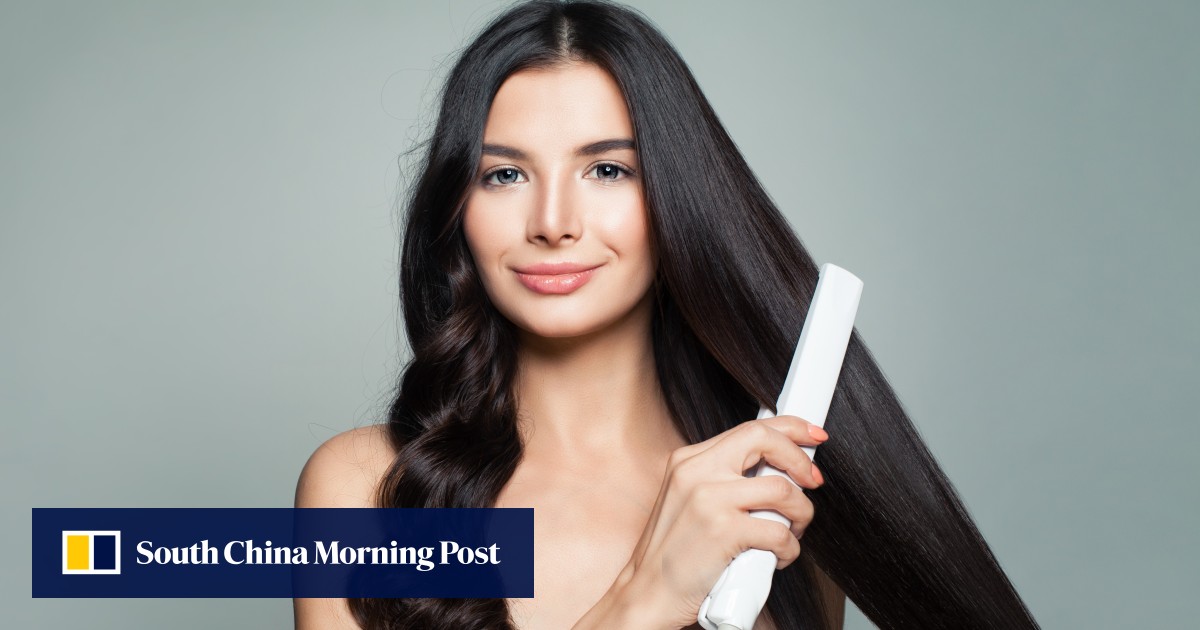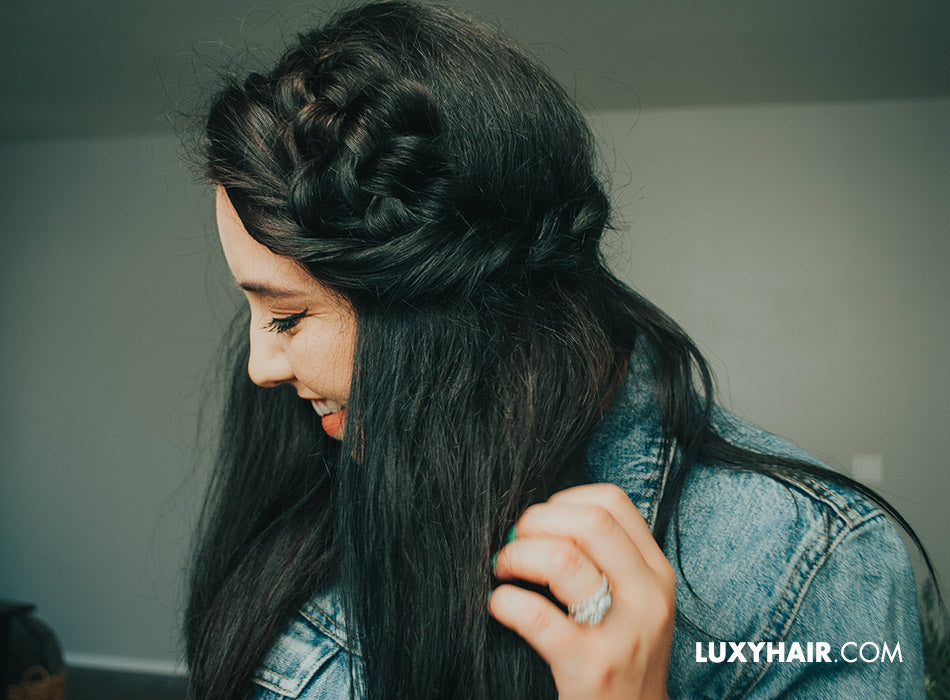How to Protect Your Hair from Heat Damage
Maintaining healthy, vibrant hair is a priority for many, and for good reason. Beautiful hair boosts confidence and contributes to a positive self-image. However, the frequent use of heat styling tools like straighteners, curling irons, and blow dryers can significantly damage your hair, leading to dryness, breakage, split ends, and even permanent damage. If you’re looking for ways to protect your luscious locks, look no further. At hairy.cartlab.web.id, we’re dedicated to providing you with the knowledge and resources to achieve your hair goals. This comprehensive guide will equip you with the essential strategies to minimize heat damage and maintain healthy, radiant hair. We’ll delve into preventative measures, styling techniques, and aftercare routines that will transform your hair care regimen.
Heat styling is a common culprit behind many hair woes. The high temperatures generated by these tools can disrupt the hair’s natural protein structure, leading to a weakened cuticle and increased vulnerability to breakage. Understanding the mechanisms of heat damage is the first step towards preventing it. This article explores a holistic approach, encompassing pre-styling preparation, mindful styling practices, and post-styling care, all aimed at protecting your hair’s integrity and preserving its natural beauty.
By the end of this article, you’ll have a practical, actionable plan to protect your hair from heat damage, ensuring it remains healthy, strong, and stunning. We’ll cover everything from choosing the right products to mastering heat-styling techniques, empowering you to make informed decisions about your hair care routine.

1. Pre-Styling Preparation: Laying the Foundation for Healthy Hair

Before you even think about turning on your styling tools, proper preparation is crucial. This stage sets the stage for minimizing heat damage and maximizing the effectiveness of your styling efforts. Think of it as building a strong foundation before constructing a house; without it, the structure is vulnerable.
-
Wash and Condition: Start with clean, conditioned hair. Dirty hair is more prone to damage from heat styling, as product buildup and oil can act as a barrier, causing uneven heat distribution and potentially burning your hair. For optimal cleaning and conditioning, be sure to check out our guide on The Ultimate Guide to Washing Your Hair Properly. This guide will teach you how to properly cleanse and condition your hair to prepare it for styling.
-
Apply a Heat Protectant: This is non-negotiable. A good quality heat protectant forms a protective barrier around each strand, shielding it from the intense heat of your styling tools. Look for products that contain silicones or other heat-resistant ingredients. Apply it evenly throughout your hair, focusing on the ends, which are the most vulnerable to damage.
-
Towel Dry Gently: Avoid harsh rubbing, which can cause breakage. Instead, gently squeeze excess water from your hair with a microfiber towel or an old t-shirt. These materials are much gentler on your hair than traditional towels.
-
Detangle Carefully: Before applying heat, make sure your hair is completely detangled. Use a wide-tooth comb or a detangling brush to gently work through any knots, starting from the ends and working your way up. For more detailed instructions on proper detangling, refer to our article on The Right Way to Comb Your Hair for Minimal Breakage. This article provides expert tips on minimizing breakage during detangling.
2. Choosing the Right Tools and Techniques

The type of heat styling tools you use and how you use them significantly impact the health of your hair. Investing in high-quality tools and mastering proper techniques are essential for minimizing damage.
-
Opt for Ceramic or Tourmaline Tools: These materials distribute heat more evenly, reducing the risk of hot spots that can cause damage. Avoid metallic tools, which tend to generate uneven heat.
-
Adjust the Heat Setting: Don’t crank the heat to the maximum setting. Use the lowest effective heat setting possible. Higher temperatures don’t necessarily mean better results; they just increase the risk of damage.
-
Limit Styling Sessions: Try to limit your use of heat styling tools to a minimum. Embrace your natural hair texture as often as possible, giving your hair frequent breaks from heat.
-
Use a Low Heat Setting: Always start with the lowest heat setting possible and gradually increase it if necessary. This allows you to achieve the desired style while minimizing heat exposure.
-
Keep the Tool Moving: Don’t hold the heat styling tool in one place for too long. Keep it moving constantly to prevent overheating and damage.
3. Mastering Heat Styling Techniques

Even with the best tools and products, improper technique can negate your efforts. Mastering these techniques is crucial for preserving your hair’s health.
-
Section Your Hair: Divide your hair into manageable sections before styling. This ensures that each section receives even heat distribution.
-
Use a Comb or Brush: A comb or brush can help to guide your hair through the styling tool, preventing snags and pulling.
-
Avoid Overlapping: Avoid overlapping sections while styling, as this can lead to over-processing and damage.
-
Don’t Over-Style: Only style your hair as often as necessary. Over-styling can lead to dryness, breakage, and split ends.
-
Practice Makes Perfect: Mastering heat styling techniques takes time and practice. Don’t be discouraged if you don’t get it right away.
4. Post-Styling Care: Nourishing and Protecting Your Hair

Post-styling care is just as important as pre-styling preparation. It’s your chance to nourish and repair your hair after heat exposure.
-
Use a Cool Shot Button: If your styling tool has a cool shot button, use it at the end of styling to set the style and seal the hair cuticle.
-
Apply a Leave-In Conditioner: A leave-in conditioner helps to hydrate and protect your hair throughout the day.
-
Deep Condition Regularly: Treat your hair to a deep conditioning treatment once or twice a week to replenish moisture and repair damage.
-
Avoid Harsh Chemicals: Minimize the use of harsh chemicals like sulfates and parabens, which can strip your hair of its natural oils and exacerbate damage.
-
Protect from the Sun: Just as your skin needs protection from the sun, so does your hair. Use a UV protectant spray or wear a hat when spending time outdoors.
5. Alternative Styling Methods: Embracing Heat-Free Options

Reducing your reliance on heat styling is the ultimate strategy for preventing heat damage. Explore these heat-free alternatives:
-
Air Drying: Let your hair air dry naturally as often as possible. This gives your hair a much-needed break from heat.
-
Braids and Buns: Create stylish braids or buns to achieve different looks without heat.
-
Overnight Styles: Try overnight hairstyles like braids or twists to create waves or curls without using heat.
For those with shorter hair, you might find our article on Tips to Style Short Hair for Volume helpful in discovering heatless styling options.
Protecting your hair from heat damage requires a multifaceted approach. By following these guidelines and incorporating them into your routine, you can significantly reduce the risk of damage and maintain healthy, radiant hair for years to come. Remember, patience and consistency are key. With dedication to these practices, you’ll see a noticeable improvement in the overall health and appearance of your hair.
For more detailed information and expert advice on protecting your hair from heat damage, visit How to Protect Your Hair from Heat Damage.









Comments